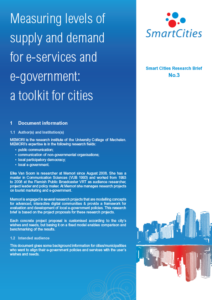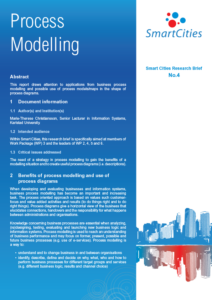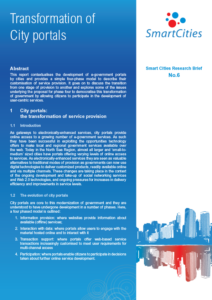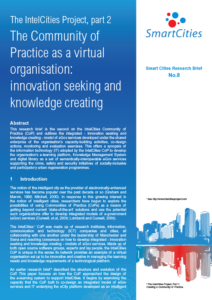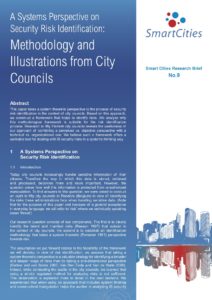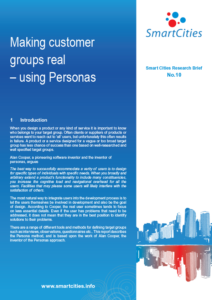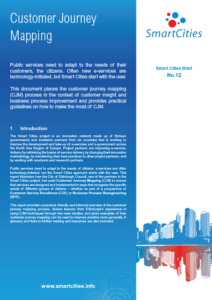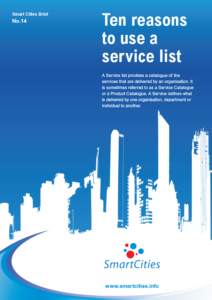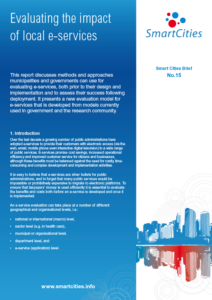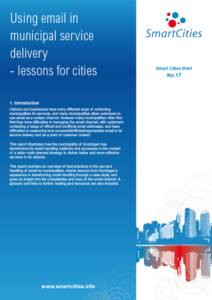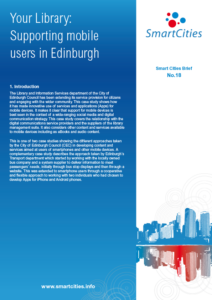One of the key objectives of the Smart Cities project was to use the Smart Cities Academic Network – a people based innovation network – to identify and define the key strategic questions and business challenges governments and organisations were facing.
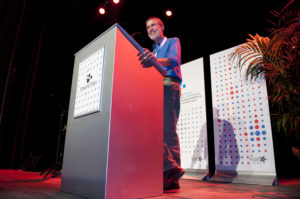
The network – made up of university and university colleges from six countries from across the North Sea region of Europe – gave partners access to a wide range of expertise and skills that they used as they explored new ways to improve their electronic service delivery.
The need for timely, relevant content
If you want to support innovation you have to develop plans to produce enabling information, and then get that information into the hands of the people who are going to use it.
Traditional academic publication models don’t work if you’re providing near real-time support to organisations – you can’t afford to wait for material to be published. Journals and other academic publications usually target a very different audience from the one we wanted Smart Cities to reach – we wanted to produce content that was relevant to partners.
Using ‘Research Briefs’ to leverage knowledge and disseminate information
So we developed a two stage approach to produce relevant content. The first step was to identify an accessible content format – covering design, target audience, audience maturity level, format, distribution channels and so on.
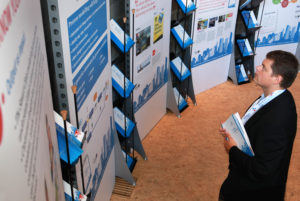
The second was to produce a publication schedule so partners knew what work was under development so they could see make sure their project work was able to use the resources SCAN produced.
This approach meant that the Smart Cities’ academic partners helped the government partners to identify and define the key strategic questions and business challenges they faced, and to support them with practical help and suggestions as they designed new services.
Building relevant models, accelerating adoption

The academic network was able to build models to guide policy and strategic development – like the e-government review from Napier and Smart City model from MEMORI – that were based on surveys of partners’ priorities and plans and through hands-on collaboration with partners and colleagues. This meant that we were providing relevant outputs that partners actually used.
The research brief format was also used as a way to introduce ideas that the project would then develop and deploy – so introductory research briefs on key approaches like using Process Models and the value of Customer Profiling in service design were followed later in the project by more detailed case studies with in-depth examples of how to build and deploy process models and how to use customer profiling.
Using networks and thinking about how you distribute your content
We decided early on to take an open approach to content dissemination. Many projects try to build their own networks, and to use these networks to disseminate their findings and learning. In practice, this means that many networks only have a substantial amount of information of value at the end of their project – so by the time they have information to share they’re usually in the process of winding down. This means that many projects have less impact than they should.
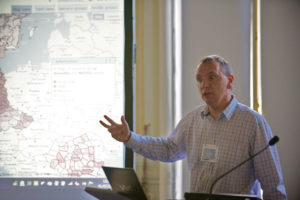
So for Smart Cities we decided to leverage existing networks as much as possible – so not only did we have a website, we also used alternative channels like SlideShare and LinkedIn to provide additional ways to distribute content, and worked with existing networks like URBACT to lever their networks and share content and ideas.
Rather than wait for people to come to us, we went where people were.
This approach allowed us to use our Research Briefs to disseminate findings and lessons learned to cities across the North Sea region. We were able to reach both academic and practitioner communities and to disseminate briefings, tools, and tested methodologies.
Smart Cities Academic Network Research Brief Library
You can see the complete library of 20 research briefs below.


